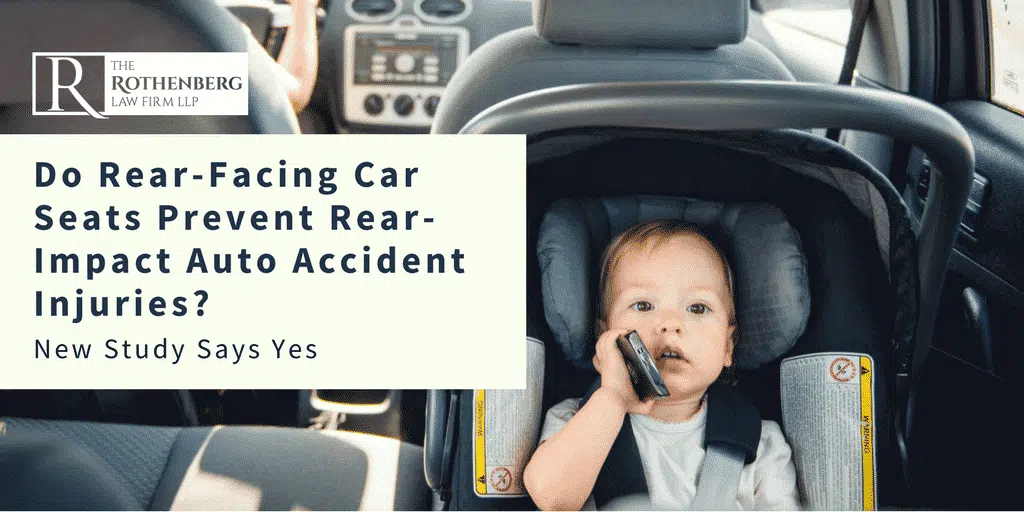
If your child is still young enough or small enough to ride in a rear-facing car seat, you might be wondering whether your child is protected from serious child injuries in the event of a rear-impact auto accident. Such an accident, you might have imagined, could produce significant force into the direction your child is facing and cause serious auto accident injuries.
Given that researchers have previously conducted research on the protection provided by rear-facing car seats when a vehicle is involved in a front-impact or side impact-collision—studies show the rear-facing car seats really do work in preventing an injury after a car accident—it should have been an obvious next step to assess the safety protections of these car seats in a rear-impact collision. Yet, as a recent study discussed in Science Daily clarified, rear-facing car seats “are rarely discussed when it comes to rear-impact collisions.”
Researchers at The Ohio State Wexner Medical Center sought to conduct research on this important issue. Because rear-impact motor vehicle crashes account for more than 25%, or one quarter, of all reported collisions, it is essential for parents to know whether their car seats are actually protecting their kids from auto accident injuries. What did the researchers find? In brief, when parents use rear-facing car seats properly, they are indeed “safe for children in rear-impact crashes.” More specifically, the study concluded that, when a rear-impact collision occurs, “the rear-facing seat is able to support the child’s head, neck, and spine and keep those really vulnerable regions well protected.” The research findings were published in SAE International.
While it is great news that rear-facing car seats provide protection from auto accident injuries in rear-impact collisions, actually using these rear-facing car seats properly can prove more complicated than you might think. First, parents need to be certain that they have properly tightened the seat into the motor vehicle. As the study highlights, a “properly-tightened installation helps reduce the risk of injury because it limits the amount of energy transferred to the child.” In addition, each rear-facing seat has its own set of safety guidelines, and parents should follow those recommendations to prevent child injuries after a car accident.
Children and Auto Accident Injuries
How often do motor vehicle crashes affect kids? According to a set of facts from the U.S. Centers for Disease Control and Prevention (CDC), parents should take note of the following:
- In 2015, 663 kids aged 12 and younger suffered fatal injuries after car accidents;
- In 2014, more than 121,350 children aged 12 and younger sustained nonfatal auto accident injuries;
- As many as than 600,000 under the age of 13 may ride in motor vehicles without a car seat, booster seat, or seat belt (in other words, the child is completely unprotected); and
- Approximately 35% of kids who sustain deadly injuries after car accidents are not wearing a seatbelt or strapped into an age-appropriate car seat or booster seat.
Make sure your child is safe! Always strap your child in properly to his or her car seat and be sure to check that any and all of your older children are wearing their seat belt properly as well. If you have questions about child injuries and traffic crashes, you should discuss your case with an experienced child injury lawyer.



